A Chore Chart for Kids is a template that parents can use to indicate the tasks that their children should do based on their ages.
It is a nightmare for most parents trying to get their children to handle some chores at home. Most children do not love doing work since most of them expect someone else to do it. As a result, children either choose to postpone or refuse entirely.
In other cases, children bring up different excuses to avoid them, and this causes conflicts with the parents. As parents, the best way to guide your children into doing some chores at home is by creating a chart. As a result, there is a clear distribution of tasks among the family members; hence, better house management.
It highlights the workload to be completed by their children. It also ensures equal distribution of chores, which helps encourage their kids to handle the ones given to them.
Parents should help guide their children even when they are reluctant about it. This is because children will significantly benefit from handling chores. Parents should assign the home tasks to their children to teach them responsibility, and an effective chart will help them do just that.
Free Chart Templates

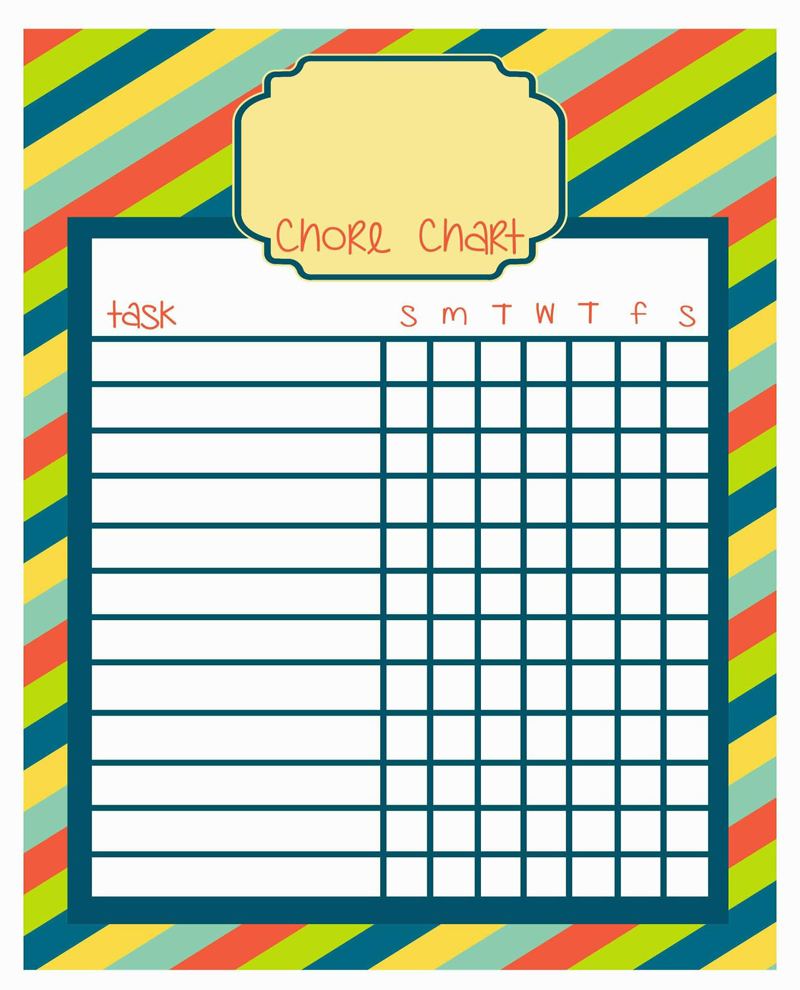
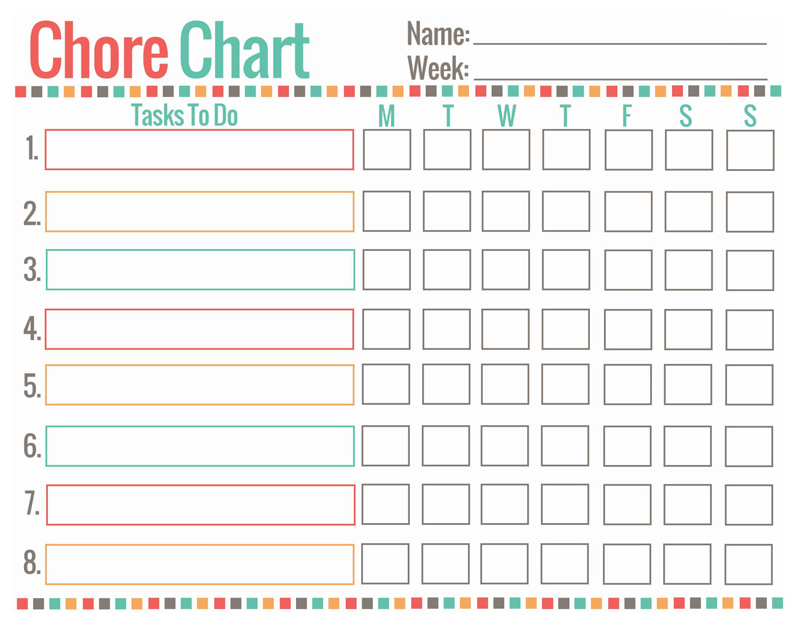
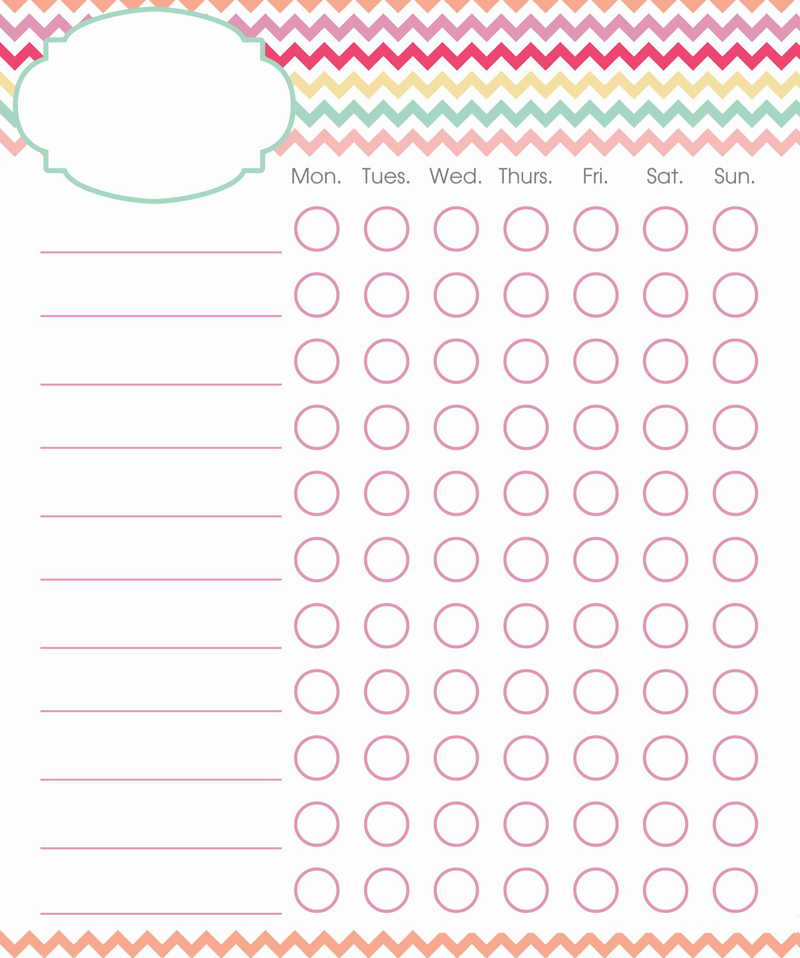
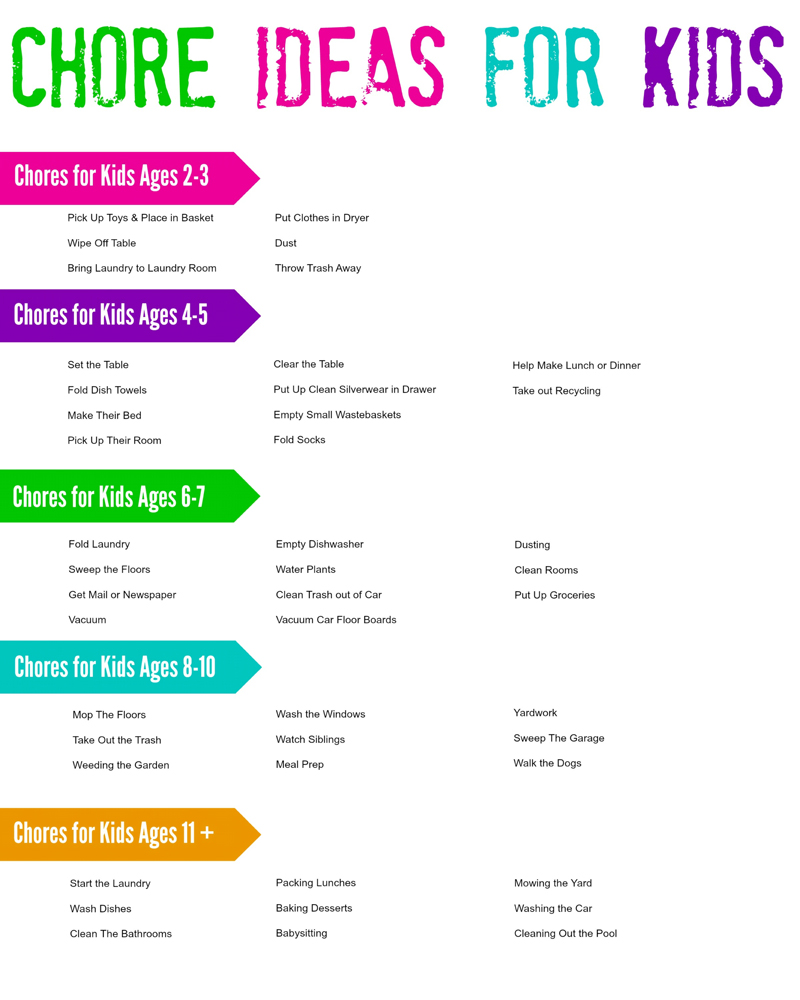
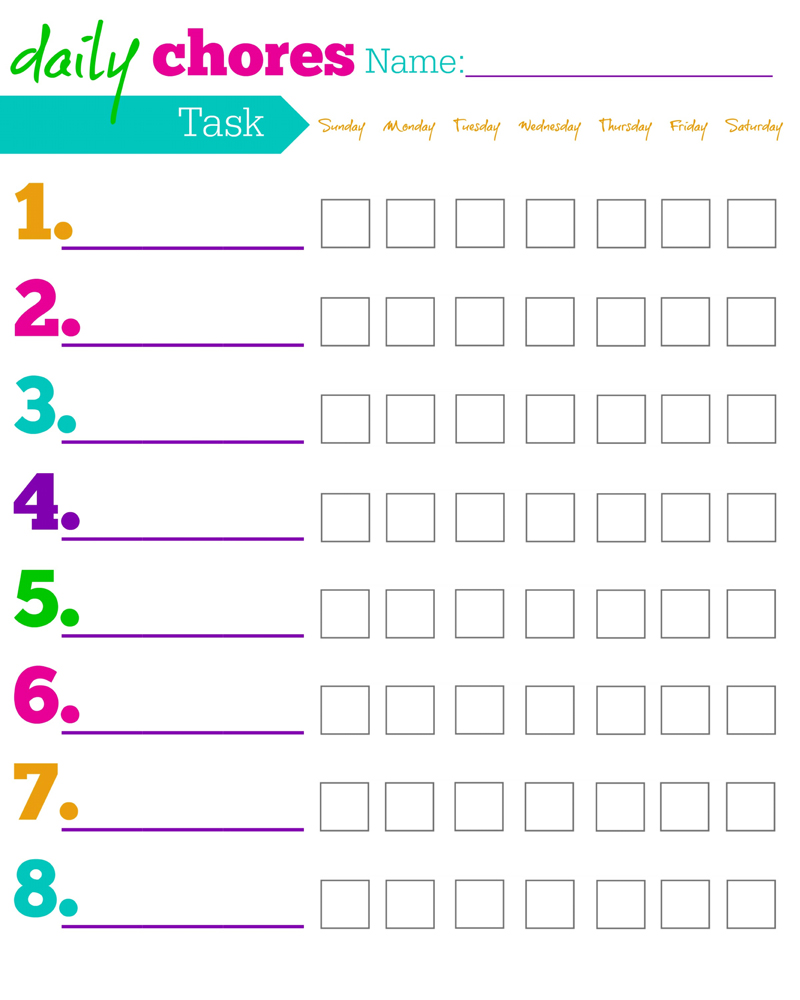
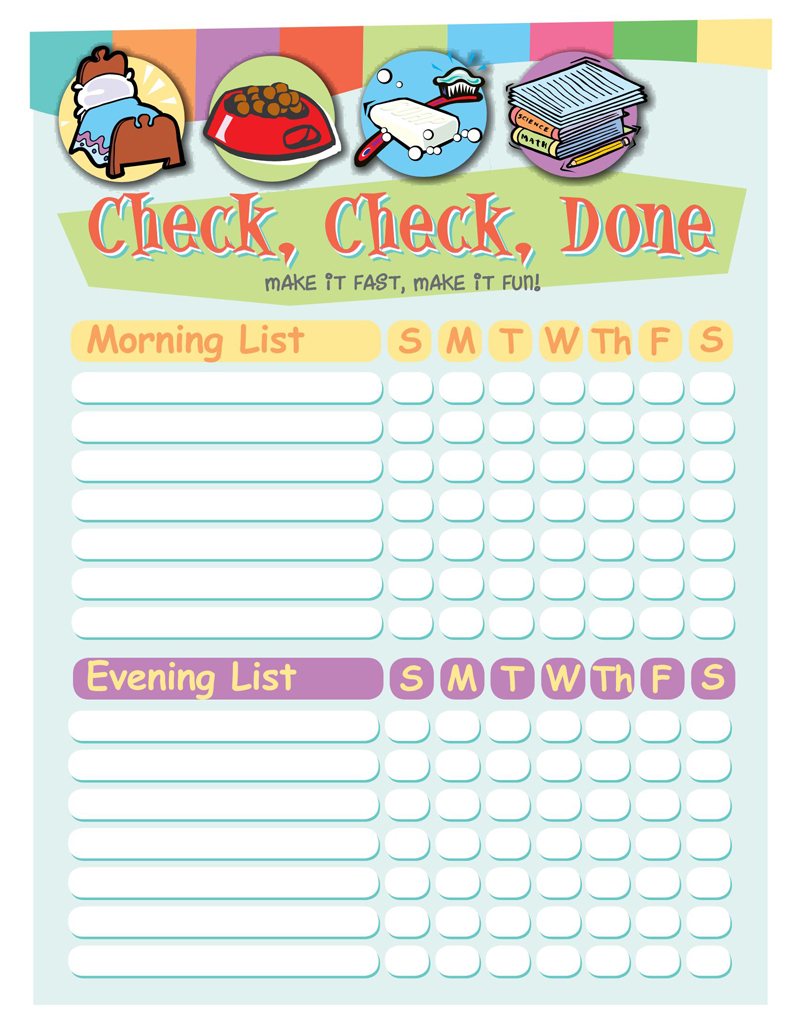
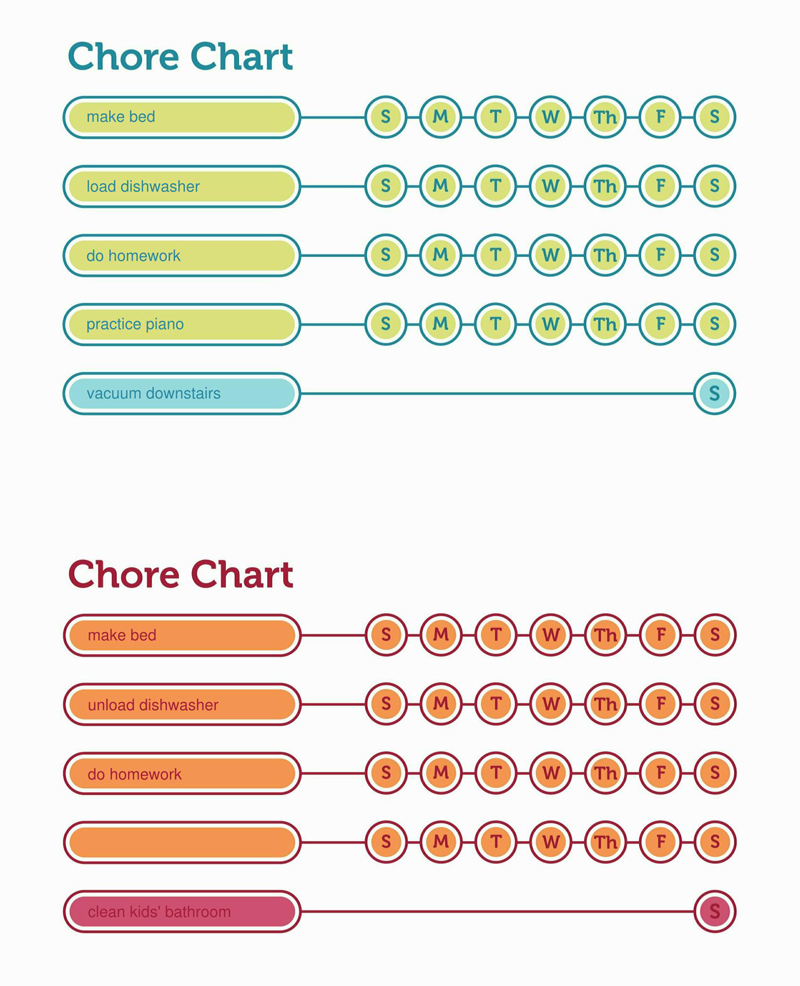
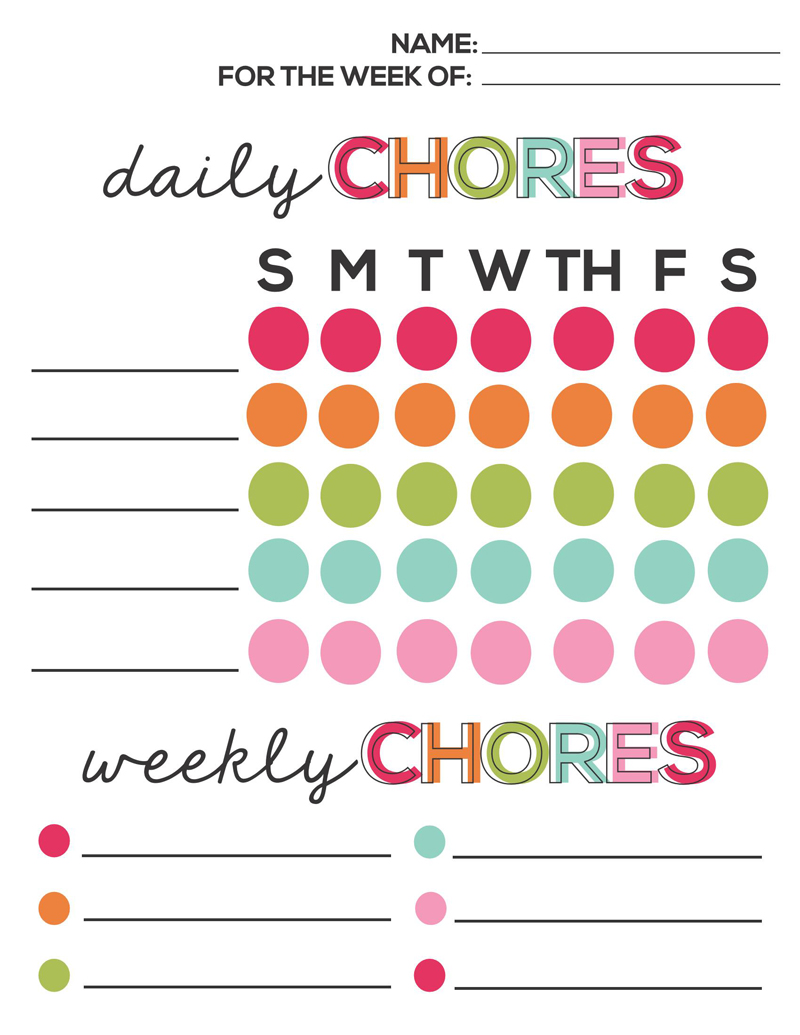
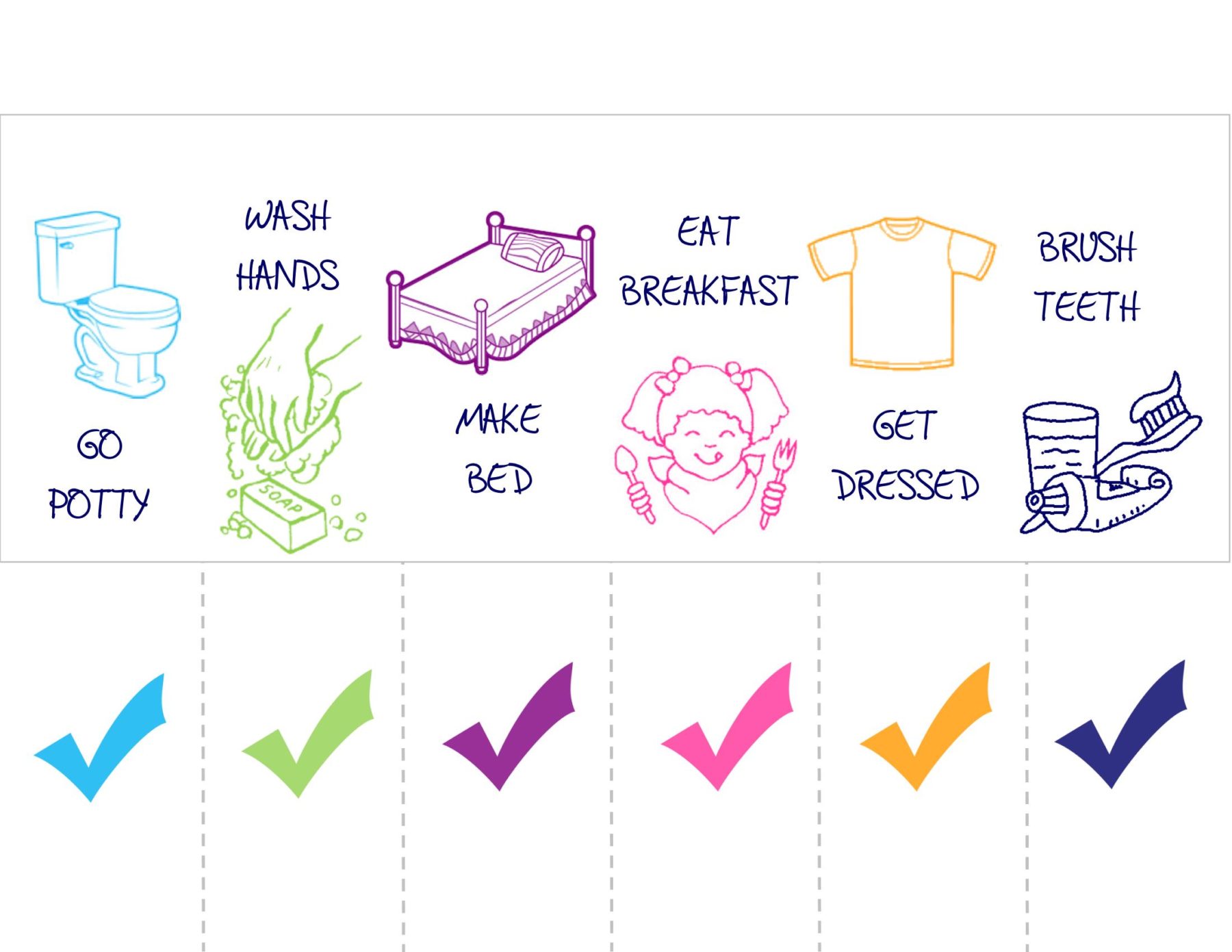
Why Children Resist
For parents to get their children more involved with handling chores, they first need to be aware of how children view them.
EXAMPLE
A simple task might be difficult from a child’s point of view.
With this knowledge, a parent can understand why children tend to resist.
Here are three reasons why children tend to resist handling them:
- Lacking judgment: Children may refuse to do the chores since they do not understand the effort and work required to keep the household tidy and running effectively.
- Impulsive: Other times, children resist due to their nature. They want what they are looking for based on their understanding of time, which is usually immediately. Children are not easy to reason with when it comes to doing something that does not please them immediately.
- Self-absorbed: Children are usually so focused on themselves and fulfilling their needs. That means that they are not quick to get involved in something that puts other people’s needs first.
note
Parents, therefore, need to teach their children some necessary skills by guiding them in doing house chores even when they face resistance from their children.
Is it Worth the Struggle?
Although always telling your children to handle and complete chores at home may be challenging, it is definitely worth the struggle, and parents should keep the habit going.
Using a chart for kids will make this process easier and hence help parents avoid the following situations:
- Having to do the chores themselves
- Regular conflicts with the children, which might ruin the relationship
- Feeling guilty to ask for help from children by thinking that they are pressuring them with more activities than what they are already dealing with
- Thinking that they are not doing the tasks since they are too young and will deal with responsibilities when they grow up.
Should You Reward Your Kids?
When it comes to rewarding your kids for doing household work, it is a personal decision that each parent must make. Some parents believe it is okay to reward their children, and they do it in the form of an allowance. Whatever the decision, parents should never forget that this is about responsibility and discipline, which makes any form of reward just a bonus.
Older children can be given rewards in the form of money since it will help teach them about the importance of working hard. If, as a parent, you wish to reward your child, regardless of the child’s age, you should always consider the way you choose to offer the reward.
Here are three ways you can use to give a reward to your kid(s):
Do to earn allowance
Parents should always be specific about this option. They can choose to have an agreement on how this process will work. Children should be aware of the tasks they need to complete in order to get their reward, that is, allowance. They should also be informed of the number of tasks to be completed and when they will receive their allowance.
The allowance will help children understand the need to work hard in order for them to receive compensation. They will also understand that any work given to them must be appropriately handled.
Chores and allowance are separate
Parents can also choose to separate tasks and allowance. That means that parents who choose this option want their children to understand that they are required to do tasks without expecting any form of reward as part of the family.
Such parents aim to help their children understand that it takes a lot of effort to keep the household running effectively and be respectful of everyone’s efforts. Also, they help their children understand how to be responsible with their finances since they can only receive the allowance if they satisfy their parents.
This way, these children can be able to control their spending habits and budgets better.
Earn privileges
When it comes to rewarding, parents can alternate allowances with earning privileges. This means that children can get what they want as a form of reward for completing their chores. This may include getting toys, using the phone, or getting a computer. However, it is not advisable to use food as a reward as it may lead to bad eating habits.
note
Whatever choice a parent decides on when it comes to rewards and chores for the kids should be marked on the chore chart so as to encourage them.
Importance of Assigning them to Kids
A chart for kids helps parents in assigning chores to their kids. With the chart, parents can easily break down their kids’ chores based on their ages.
Here are some benefits that parents should know:
Life skills
These are important to kids as they help them develop life skills. Children will be able to give back to you as their parents and feel more connected to the family when asked to participate in completing chores. In addition, they become more responsible beings since they are being held accountable for completing certain chores.
Children also become positive-minded and capable since they are able to handle and complete small tasks at home. Children learn and practice the skills they will need for everyday proper living.
Children will learn how to survive and function independently in the outside world without their parents’ presence.
Self-esteem
Involving children will help boost their self-esteem. Parents tend to focus either on their children’s academic or sports side and ignore when their children fail to complete their chores. This, in turn, works negatively for their children’s self-esteem.
Children who fail in their academics or sports, which their parents view as most important, usually end up with low self-esteem. This is because they are not well-rounded children with skills in other aspects of life that they can depend on when they fail in their academics or sports.
That is why it is necessary to teach children how to do chores, as accomplishing such small tasks will help boost their self-esteem when they fail in other aspects of their life.
Happier adults
They shape children into becoming happier adults in the future. Studies and research suggest that giving your kids chores to complete will help them have better mental health in the future. This is because of the desire, ability, and willingness to work that they learn as kids.
Learning of time management
Parents should not allow their kids to fail even with a full plate of activities that their child needs to accomplish. This will help them with time management. In addition, children will learn how to divide their time to complete their schoolwork and still finish their chores assigned to them.
Children will also know how to manage their time as adults as they have already learned how to complete several tasks within a limited time.
EXAMPLE
As adults, they will be able to be at their jobs on time and still spare time for shopping.
Surge in brain development
Parents should give their children chores to do since it helps with brain development. In addition, these increase their brain growth since they are movement-based tasks that will trigger their hands-on skills and experiences.
Children have actively growing brains, and involving them in doing chores will help boost their brain development. That means that parents will help their children to develop more and better if they assign them chores.
EXAMPLE
If a child is setting the table, the idea of moving plates and silverware can be applied in real life, especially when it comes to maths skills. They can use the ideas they gathered to improve their maths skills, such as how to count by counting the utensils needed at the table, arranging different utensils such as plates, forks, spoons, etc.
Also, it will aid them in reading and writing.
Better relationships
Parents will help their children build better relationships when young and also as adults. This is because chores help them understand the importance of contributing to the family and how to work together with others.
This means that the children will develop positive relationships with their family members and friends. They will also learn how to be empathetic as adults. When they choose to get married, these children become better helpers and desirable to their partners.
Financial management
Chores will help children develop their financial management skills. In addition, they will learn about self-control and discipline in taking time to complete their assigned tasks, which will benefit them when handling their finances in the future.
Passion for organization
Learning to do chores will help children develop an interest in organizing things. Some tasks like making their bed, folding their laundry, and even washing and putting away the dishes will help children learn how to organize the house and maintain neatness. This will benefit them at school and even as adults at work and in their homes.
Making a Chart Template for Kids
Since chores are important for children as they grow, you should find ways to guide the children.
EXAMPLE
Parents can use the chart for kids to highlight their children’s chores to ensure their children remain accountable for completing the tasks assigned to them.
Parents can prepare a chart template for kids to help promote their importance among the children. The template can be created using Microsoft Excel or printed from online sources. You can download the template online and use it or format it according to your needs.
The chart template for kids should be well-prepared. It is best printed and hung somewhere where the kids will see it.
Here are some ways that you can use to prepare this template:
By way of organization
Parents can prepare the chart template for kids based on the organization. This means having a list of tasks to be done and indicating the person responsible.
An organization can be divided into four different ways to be successful:
- Master list: The master list highlights all the chores that need to be done on either a paper or on their computer using the spreadsheet. This list should include not only the chores but how frequently they need to be done and mention all the indoor and outdoor ones.
- Individual list: After preparing the master list, the next step is the individual list. This list stipulates the actual task and the child responsible for doing it. That means, if the master list mentions cleaning the house, the individual list will include Child A will take out the trash, Child B will clean the dishes, and much more. The individual list should also be divided based on the children’s ages and strengths. Here, the parents should not put very high expectations on a child but assign them that fit their abilities. Parents should rotate these among their children to help all of them learn from the different jobs. This list can also contain a list of smaller jobs for young ones who cannot complete the entire job. For instance, instead of the list mentioning doing the dishes, it can highlight Child A removing leftovers from the dishes, Child B washing the dishes, Child C rinsing the dishes, and much more.
- Deadlines: When it comes to preparing a template based on organization, a parent should also indicate the time spent and provide deadlines for each task. That way, children learn how to perform a particular task and learn other important tasks like time management, financial management, and other essential skills.
- Evaluation: The template should also have a section meant for evaluation. That means that a parent should indicate how their children did on those chart templates. Younger kids can be given stars or stickers to indicate a well-done job.
Older kids can have their allowance or any other form of reward marked on the template to indicate that they completed their tasks properly and on time.
By way of chronological setting
Apart from the organization, parents can prepare a template based on the chronological setting. This means they can list tasks that need to be handled on a particular basis and divide them accordingly. Parents should try and prepare a master list also in this case before sub-dividing them.
- Daily: These are the chores that must be handled on a regular and everyday basis. Parents can rotate these among their children but still keep in mind their children’s abilities and ages. Some of them include sweeping the house, washing the dishes, taking care of the pets, dusting, preparing meals, and doing their laundry.
- Weekly: For these chores, they are a bit more strenuous. They might have to be completed by older kids. Younger kids can either watch and learn or be part of helping out, unlike the daily tasks where they can complete them on their own.
Some of the weekly ones include washing the car, taking out the trash, washing the bedding, watering plants, and mowing the lawn.
- Monthly: Monthly chores may require help or supervision by parents. They may include cleaning the refrigerator, washing the windows, cleaning blinds, vacuuming curtains, and bathing pets.
- Yearly: The yearly chores are usually tasked for older kids and are mainly done with the help of the parents. These may include pruning, cleaning the garage, and shampooing the carpets.
Age-Wise Chart for Kids
Parents can help their kids benefit if they divide them based on their children’s ages. This makes these simple to handle and helps the children to be more effective.
Here are some that can be assigned to different children of different ages:
Chores: ages 2 and 3
Tasks for kids at this age are usually simple and easy to do. Parents can also help them in accomplishing these tasks.
Some of the tasks include:
- Pick up toys and books
- Help feed any pets
- Put laundry in the hamper in their room
Chores: ages 4 and 5
For children of ages 4 and 5, here are some of the tasks that these kids can do to help out at home. Of course, they might require supervision from the parents to complete the tasks.
These include:
- Set and help clear the table
- Help put away groceries
- Dust the shelves (you can use a sock)
- Make their bed
- Help an adult prepare food
- Water flowers
Chores: ages 6 to 8
For this age, the tasks are more involved and require more effort from the kids. These kids can learn how to manage their time to complete their school tasks and their assigned ones.
These can include:
- Take out the trash
- Help vacuum and mop floors
- Fold and put away laundry
- Set and clear the table
- Put away dishes from the dishwasher
Chores: ages 9 to 12
From ages 9 to 12, these children can now handle most of the tasks by themselves. They require little to no supervision from their parents.
Some that parents can assign these children may include:
- Wash dishes and load the dishwasher
- Clean the bathroom
- Operate the washer and dryer for laundry
- Help with simple meal preparation
- Change the bedsheets
- Change light bulbs
Tips for Making Chart
Parents should use the chart for kids to assign the chores effectively and adequately. In addition, the chart will ensure the proper distribution to kids based on their ages. With these tips, parents will have a more successful experience with training their kids.
These tips will help parents to prepare a proper chart for kids:
Ask yourself questions
As a parent, you need to ask yourself questions before preparing a chart for kids. Some of the questions include the tasks you want to be completed in your home, the life skills that your children will learn, the kind of rewards you would wish to give your children for completing the chores, and if these rewards are tied to them.
Seeking consent of the doer
Parents should ask for input from their children to prepare a proper chart for them. Children will handle their chores better when they are allowed to have an opinion on preparing the chart template. In addition, they can help guide you as a parent on the types of chores, the difficulty they experience, and even what they learn.
Understanding responsibility
Parents need to discuss and make sure that their children understand the responsibility involved in handling the tasks. That means that the children should be aware of the consequences involved in case the responsibilities are not upheld.
EXAMPLE
The children might have no TV time if they fail to make their bed.
Finding motivation
When creating a chart for kids, parents can also prepare a motivation plan for their children. This will encourage them to complete them with less fighting. Motivation can be in rewards like allowances, family activity, or even stars on the chart.
Children will be happy while handling these chores since they are aware of the reward awaiting them. The motivation plan depends on the parents’ decision.
Ease for kids
As a parent, you need to help your children ease into chores. First, you can have them watch you as you handle it and then next time, ask them to help you finish up themselves. Then, with this already done, you can allow them to complete a task while you supervise them and next time, allow them to handle it on their own.
This is the proper way parents can ease their kids.
Congratulate your child
Parents should also congratulate their kids once they have completed their assigned chores. This will encourage them to do even better next time. In addition, praising their efforts even when they work will help them feel acknowledged, which is important for children.
Post the chart in plain sight
After preparing the template, a parent should post the chart in plain sight for their kids to see. This way, the kids can see what chore they should complete and even get encouraged with the rewards marked on the charts.
Be consistent
Parents should maintain consistency by ensuring that their children complete their tasks always. Allowing them to ignore or skip some of their tasks will make them reluctant to handle their chores.
Do not be a perfectionist
Children learn every day, and sometimes they might make a mistake. As a parent, you should not be a perfectionist when it comes to children completing their chores. Instead, you should try to complete their tasks when you feel like they are not doing their tasks as you would.
Instead, allow your children to make mistakes and learn from them as you guide them to handle them better.
Show flexibility in deadlines
A parent needs to set deadlines for chores when preparing the chart. However, parents should try to be flexible with these deadlines.
Frequent reminders of deadlines will become a nuisance to the kids who will start lagging when completing their tasks. So instead, parents should use the “when then” approach in establishing deadlines for their kids.
EXAMPLE
“When you spread your bed, then you can have TV time.”
Keep it updated
Always keep your chart template for kids updated. You can use your children’s school break or return from vacation to update the list and rewards associated with the chores. This way, parents can change the responsibilities their kids have and the privileges they are getting.
Frequently Asked Questions
As a parent, if you choose to use rewards for your kids when they complete their chores, you need to observe three important tips. First, be specific about what your kids need to do for them to earn a reward. Also, ensure they know when and how they will receive the reward and the type of reward they will get. Second, try and make their rewards immediate since children enjoy immediate satisfaction. Ensure you reward your children, especially the younger ones, immediately after they complete their chores. Finally, use stickers or stars to indicate their achievements on the chart. Their achievements may include rewards or privileges and for marking the completion of their tasks.
A child can do different household chores based on their ages. Parents should adjust the assignments assigned to their children based on how they will help meet their needs. These household tasks should match their children’s maturity levels.
For example, children of 2 to 3 years of age can help out with simple household chores like putting their laundry in the hamper, while those of 4 to 5 can follow the household chart used by the family.




